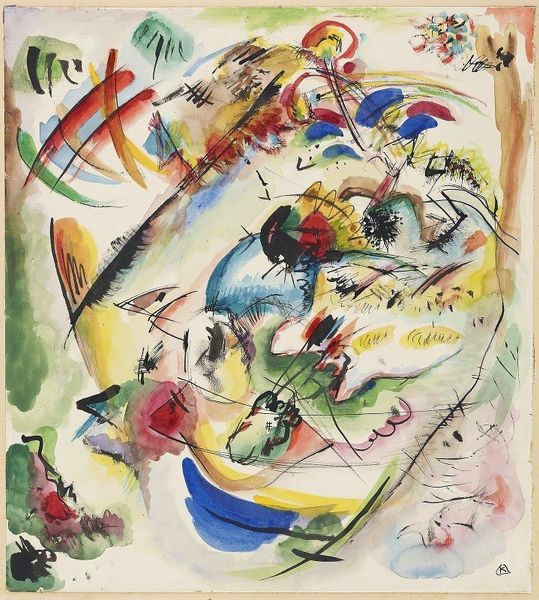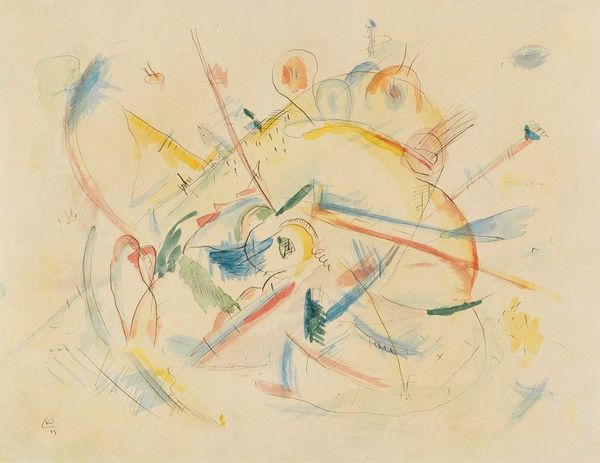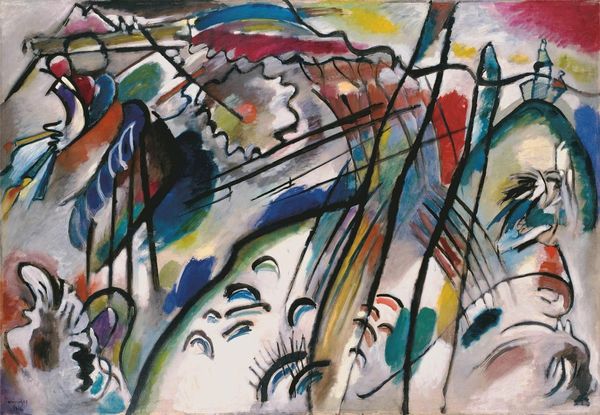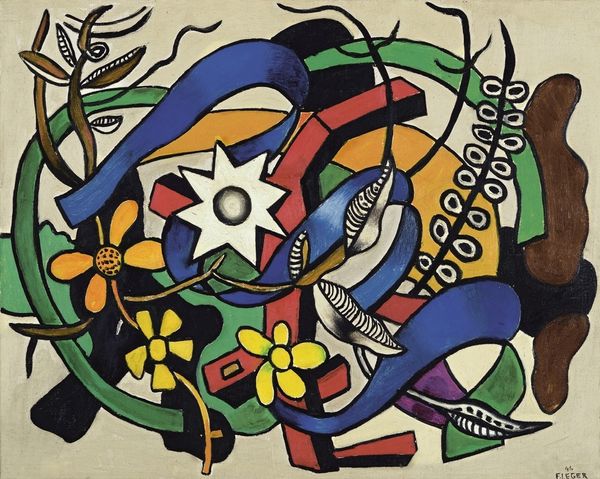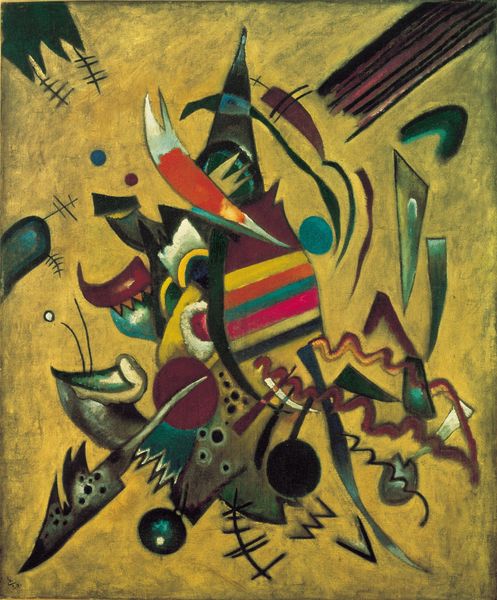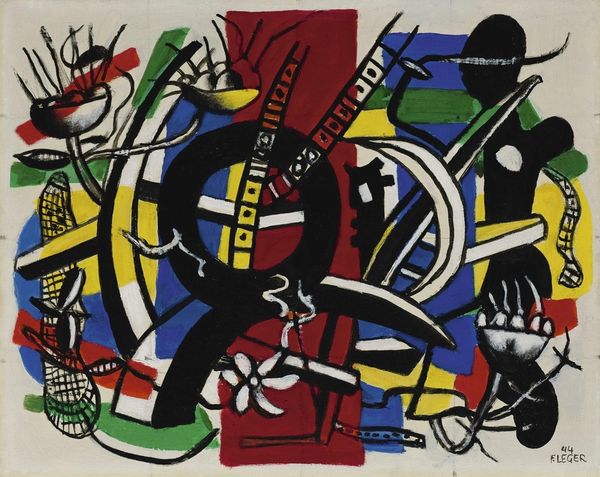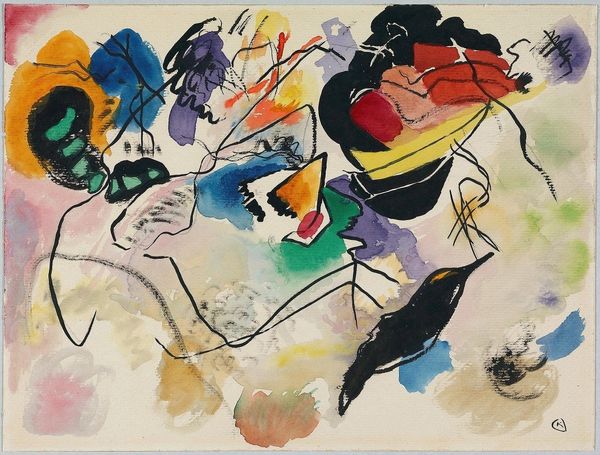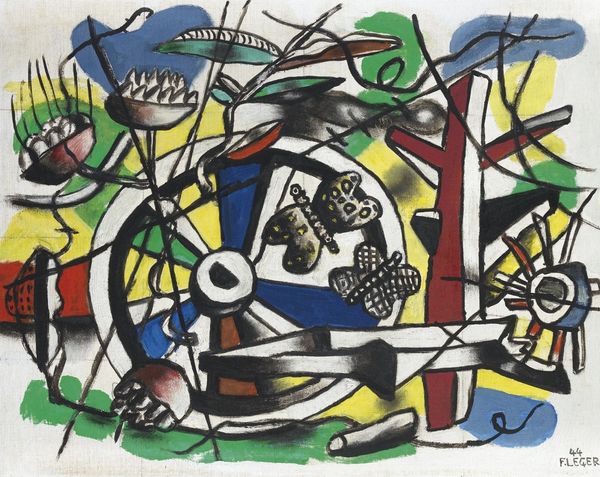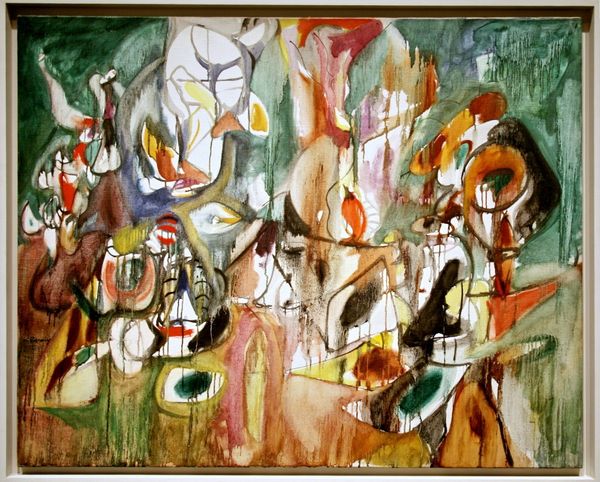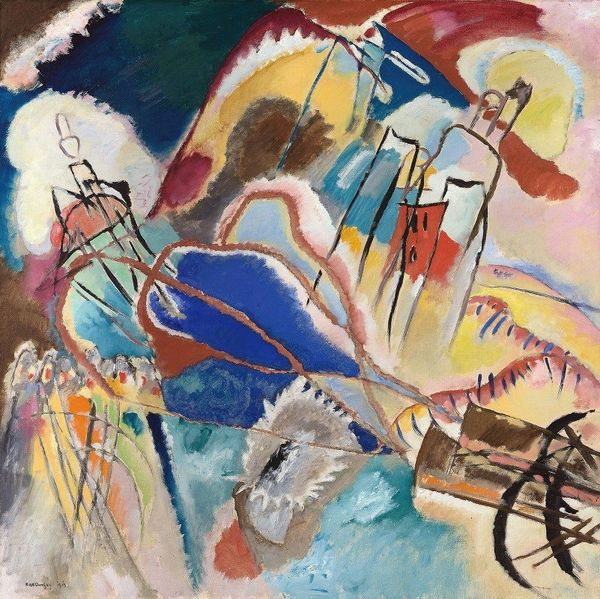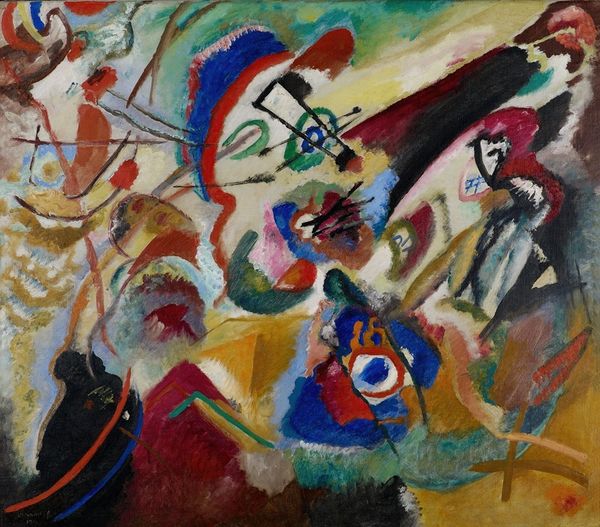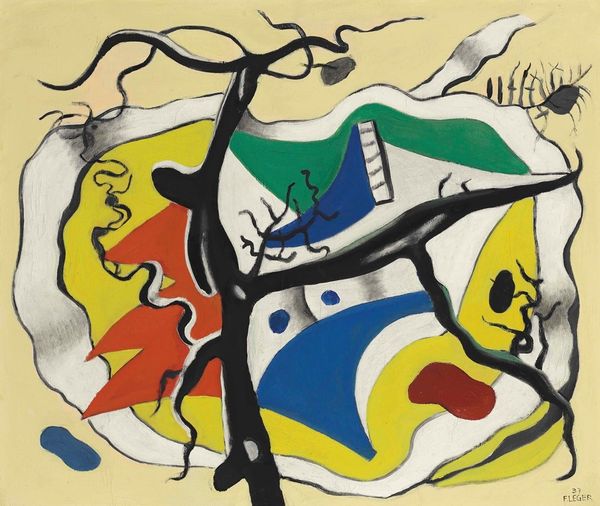
painting, watercolor
#
art-nouveau
#
painting
#
german-expressionism
#
abstract
#
handmade artwork painting
#
watercolor
#
expressionism
#
abstraction
Copyright: Public Domain: Artvee
Editor: This is Wassily Kandinsky’s “Entwurf Zu ‘grüner Rand,’” created in 1919, a watercolor piece. It strikes me as almost musical, with these lines and shapes dancing around. What do you see in this piece? Curator: I see a vibrant visual expression of the tumultuous period following World War I. Kandinsky, steeped in the German Expressionist movement, used abstraction as a powerful language to articulate the anxieties and hopes of a society undergoing profound change. Do you notice the stark contrasts and dissonant forms? Editor: Yes, the shapes feel almost jarring at times. Curator: Consider the context: 1919 was a time of political and social upheaval. Kandinsky, returning to Russia after the war, would have experienced the Russian Revolution, an extremely violent political movement. This impacted his artistic outlook, his theory regarding abstraction as a new and universal form of visual language. The sharp angles, clashing colours, could you view them as symbols of social fragmentation? Editor: That's a fascinating perspective. I hadn't thought about the social context influencing such an abstract piece. So the lack of easily identifiable forms is almost a deliberate rejection of traditional representational modes that were linked with imperial Russian cultural values. Curator: Precisely! It's an embrace of new forms of expression in the aftermath of revolutions. Also, watercolor as a medium, known for its fluidity and spontaneity, mirrors this desire for artistic liberation, perhaps also gesturing to a certain social fragility? Editor: Wow, I definitely see it differently now. It's more than just shapes and colors; it's a reflection of a changing world. Curator: Exactly! By examining the historical and cultural circumstances surrounding "Entwurf Zu ‘grüner rand’,” we find a deeper understanding of the painting’s essence. Art doesn't exist in a vacuum, right? Editor: Absolutely! I learned so much about Wassily Kandinsky’s motivations!
Comments
No comments
Be the first to comment and join the conversation on the ultimate creative platform.

